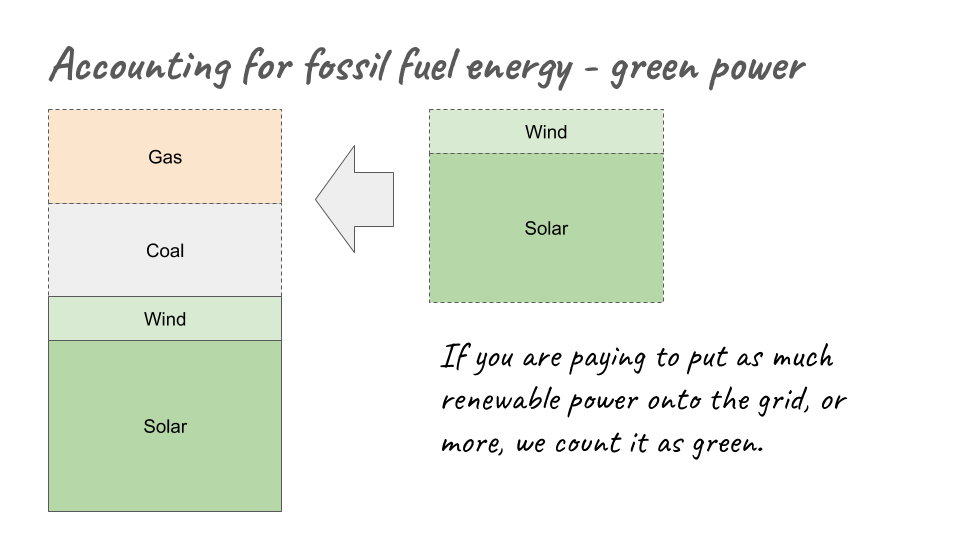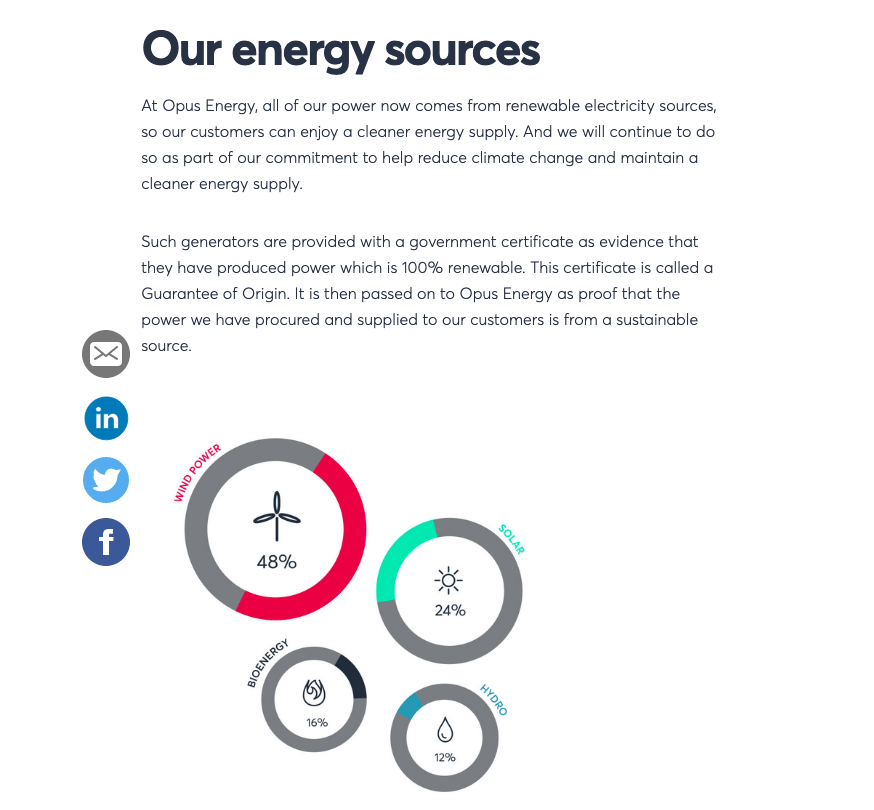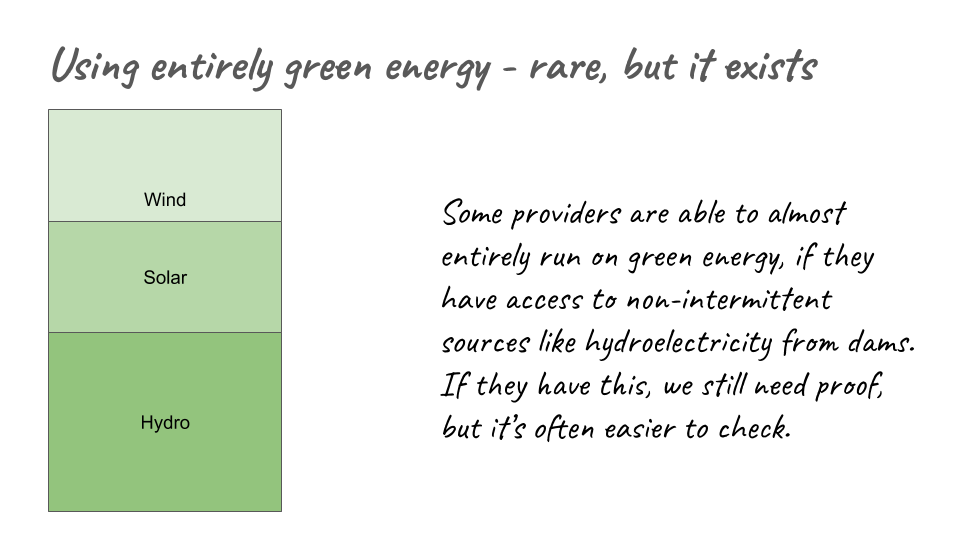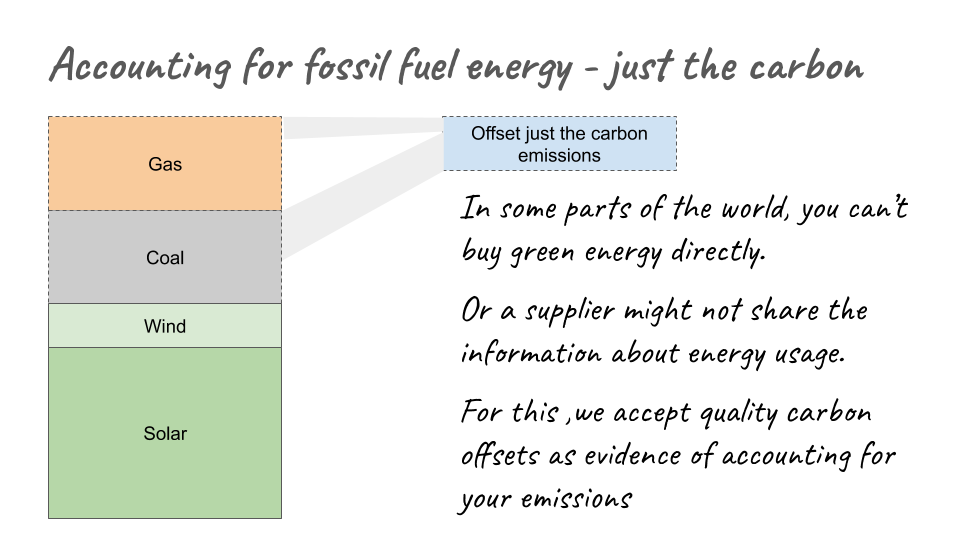To mark a site as green, you need to do one of two things.
- Host your site with a green provider
- Show evidence that you yourself are a green provider
If you want to a very simple summary of the process, our page How do I add my organisation to the Green Web Directory? might be helpful.
You can also jump straight to our provider portal if you are ready to get started.
For a more technical explanation about what we accept as evidence of green energy use please read on.
What we look for from green providers
When a provider starts the process to get verified with the Green Web Foundation, we need some information from them first before we can ask about whether they are a provider of green services.
First of all, we need a way to identify any ‘downstream’ service as coming from that provider, in a way machines can check quickly. There are three ways we use at present:
- checking the services domain name against a list shared with us by the provider beforehand.
- checking a service against a list of machine-readable public addresses – usually IPv4 and IPv6 addresses
- for some large providers providers, we support checking if a service is coming from an network address that belong to one or more Autonomous System Numbers (a kind of shorthand for a large part of the internet)
Recording this makes it possible for any ‘downstream’ site to be identified as a green website even if they themselves haven’t signed up with the green web foundation.
This also means that if want your site to be marked as green, and you know your provider uses green power, the best way to get your green badge is ask your provider to update it themselves.
Telling if a provider is green
Once this information is provided, the big question is: why is this a green hoster?
It takes energy to make and run digital infrastructure, and this energy often comes from burning fossil fuels. We are in a climate emergency because we keep burning fossil fuels, so we refer to these emissions as the carbon burn from the infrastructure.
If you want a green site, you need to show that something is being done about this carbon burn, on at least on an annual basis.
The most common way to do this is to make sure the infrastructure and services you use run on green energy, but for cases where this is not possible we also support other ways to account for the carbon emissions.
Proof of using green energy
The instructions below are aimed at a general audience. Jump to the bottom for specific guidance aimed at specialised audiences in sustainability, or the energy sector.
There are a few ways you can source green energy, but it’s it important to understand that if you are sourcing power from the electricity grid, you do not have direct control over how green it is.

It can be helpful to think of electricity as being fed into a shared pool, by a number of energy generators. Some will be green like wind or solar farms, and some will be from fossil fuel based sources, like coal-fired power stations.
But while you can run digital infrastructure entirely off-grid, there are good reasons to be plugged into a grid, so if you want to account for the fossil power, what can you do?

One common way is paying to balance out the power you from fossil sources that you are responsible for, by paying to put power into the grid that comes from cleaner, renewable sources. There are many, many ways do this, and the options available to you vary depending on where in the world you are.
Sourcing green energy from the grid
One way to do this is to agree in advance, to buy all the power generated by a renewable source of energy over a long time period. These kinds of agreement are normally referred to as power purchase agreements. We accept documentation of these as evidence of running on green power.
Another way of sourcing green energy is purchasing renewable energy certificates (RECS) or Guarantees of Origin (GvO) for the power used to make up for the power from fossil sources.
If you pay for a green energy tariff, this is often what is happening behind the scenes.
In both cases there is almost always a certificate from a provider, stating the how much power, in the form of Megawatt-hours (MWhs) was bought over a specific time period.
We accept these as documents, either shared directly with us, or a if they are online, we accept links to this information, as evidence. In the case where you are buying power on a green tariff, we accept documentation from the power provider.
In the UK
If you’re in the UK, by law, anyone selling green energy has to be able back it up with proof that it’s coming from renewable sources. This means that as a customer, you are able to ask about the kinds of fuels that make up the power you buy, and they have to provide this information if you ask for it.
This is called a fuel-mix disclosure, and it’s usually more detailed than you need, so instead you’ll often see an easier to understand page explaining the same information.
Opus Energy in the UK have a good example of this:

This information is backed up by an independent assurance from outside specialists, so you don’t need to just take their word for it.
We don’t carry out these audits of energy providers ourselves (we’re too small!) but we do act as an index for them, so you can understand the supply chain used in services you use.
Sourcing green energy not from the grid

There are some cases, where power for digital infrastructure does not come from the grid. These are rare, but do happen. If you are running infrastructure like this, we ask for proof that you really are operating it.
Proof of accounting for the carbon emitted

The final way we accept in some cases where it’s not possible to buy green power is by buying carbon offsets from projects that mitigate CO2 in other projects. In some countries this is the only way to measurably account for the carbon emissions from use of digital infrastructure.
As with renewable energy certificates, there should be a certificate with an end-date and (often) volume attached to this purchase, that could be published or linked to.
Further information for sustainability and energy professionals
For specialised audiences, we broadly aim to follow the evidence guidelines as outlined in Renewable Energy Procurement Information and Documentation Matrix from the BSR Future Internet of Power Report.
Further questions
We’ve tried to offer a simple explanation for something that covers two deeply complex systems – the energy system, and the internet – so we’ve had to leave out details for space.
It’s okay to be a bit confused, and if you have further questions, it’s worth checking our Support page.